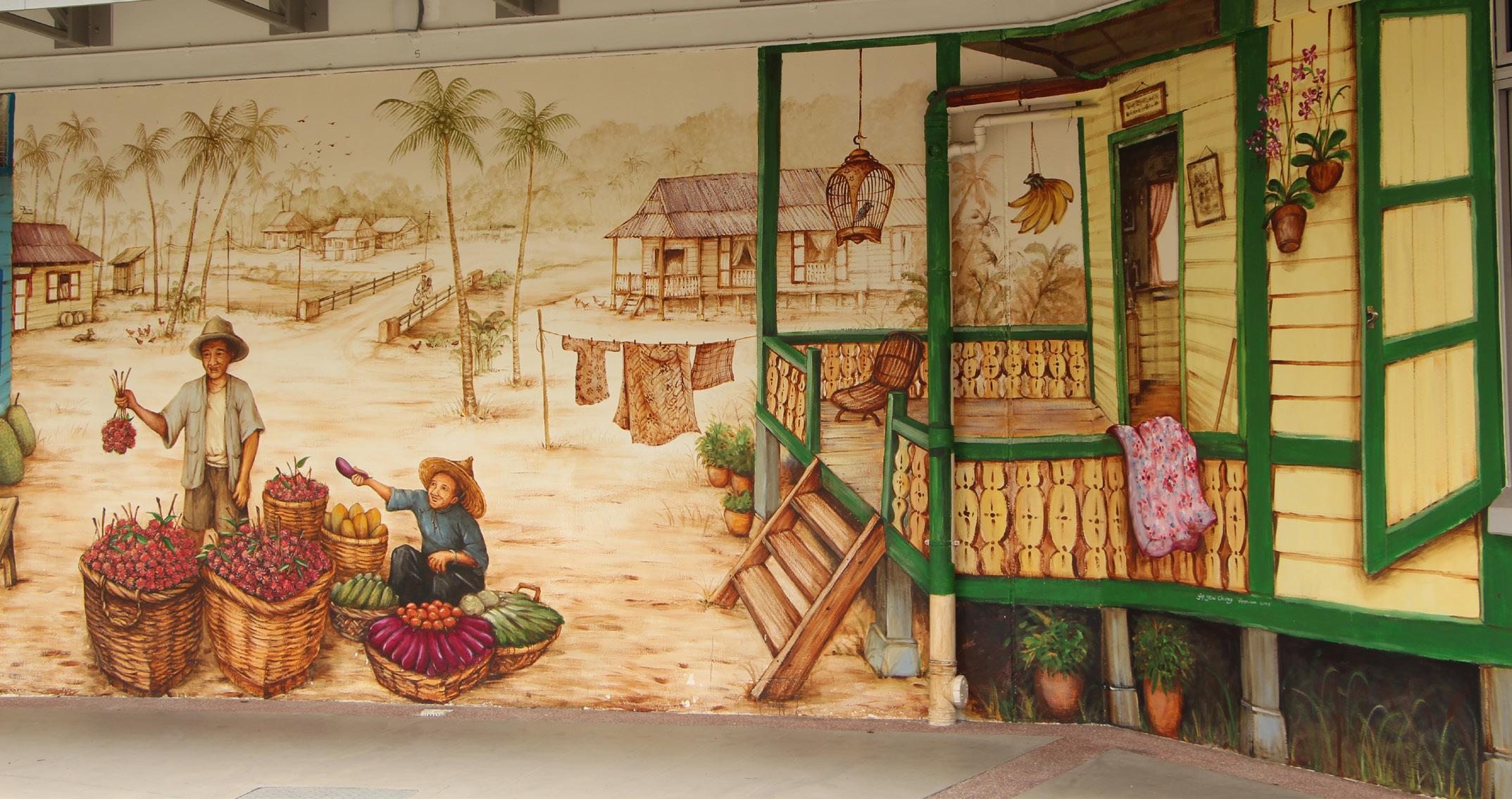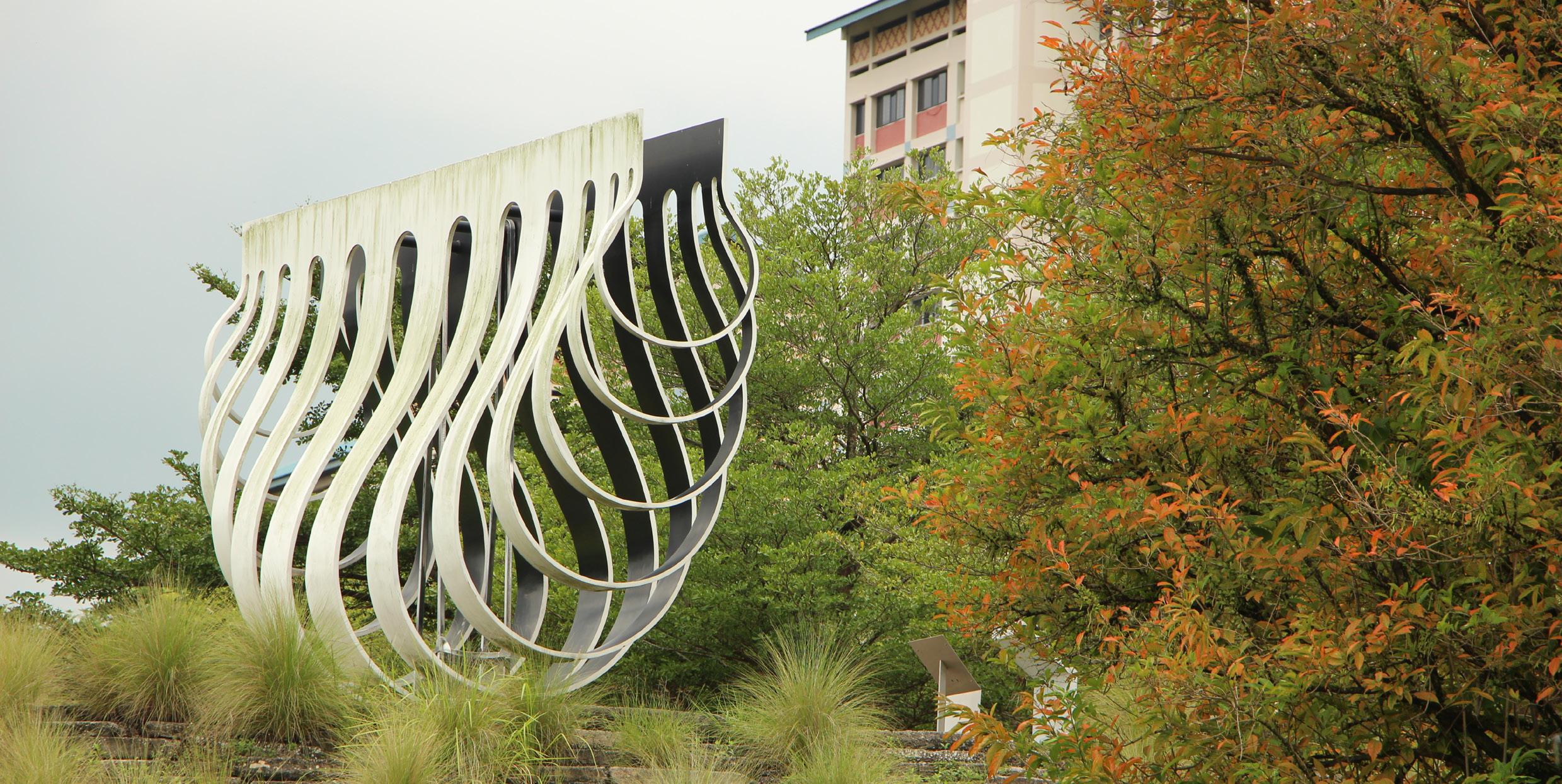
4 minute read
Hidden in Plain Sight
Discovering Singapore's Vibrant Street Art Scene
by Jennifer Williams and Isabelle Tadmoury
Advertisement
Ang Mo Kio
After taking you to public art in the central neighborhoods of Singapore, we thought it was time to go into the heartlands. Known for their enormous housing projects, the heartlands are home to 80% of Singapore’s population. They are completely self-sufficient as they come with Hawker centers, schools, medical clinics, shops, parks and basically everything you need to live a comfortable life.
While housing projects have a negative image in many countries, in Singapore the concept of public housing from the Housing Development Board (HDB) equates to quality, reliability and livability. A key part of Singapore’s original 1950’s urban renewal development was to move residents from kampongs (villages) to modern buildings with improved facilities such as electricity, individual bathrooms and kitchens. Today, there are HDB high-rise apartments with million-dollar price tags and stunning views.

HDB in Kebun Baru
Way-Finding Project
In Ang Mo Kio Avenue 4, we found public art that also serves the "well-being" of the community. This wayfinding project launched by the Alzheimer’s Disease Association (ADA), paints objects on buildings to aid the elderly with dementia in finding their way home. Traditional items identify each building. A tiffin box denotes block 102 while a teacup, satay or a rice bowl denote other buildings in the area. Even the size of the murals (big) and their location (above building entrances), help residents find their way.

Kopi Cup
Mary-Ann Khoo, Consultant at ADA comments: “The murals serve as unique identifiers of the blocks in Kebun Baru. The elderly and persons with dementia, as they get older or as their cognition deteriorates, may not recognize their way around the blocks, which all tend to look the same.” *

Rooster Bowl
Often, groups of HDB buildings look very similar and we can easily imagine how difficult the blocks are to navigate for people with dementia. This project certainly seems like a good way to address this issue.
Reminiscing Old Ang Mo Kio

Detail from Reminiscing Old Ang Mo Kio
As we approach Ang Mo Kio Avenue 1 and the Teck Ghee Court Market, we get a glimpse of what the Kampongs used to look like. Yip Yew Chong, the nostalgia muralist we’ve mentioned in previous articles, was commissioned by the Public Art Trust to paint an old-fashioned marketplace scene complete with raised wooden houses and open farmland. In the murals, chickens graze under the homes, just as they still do today! It’s hard to imagine how rustic and agricultural the area looked just 60 years ago when today you are surrounded by towering blocks of apartment buildings.

Detail from Reminiscing Old Ang Mo Kio
Enclosure for a Swing
A short walk into Bishan Ang Mo Kio Park, with its meandering river and lush banks of wildflowers helps you forget the densely populated highrises. Climbing up Recycle Hill, made from recycled concrete, will not only reward you with a panoramic view but also offer a visual treat of a steel sculpture. “An Enclosure for a Swing” by Kelvin Lim Fun Kit won the 4th CDL Singapore Sculpture Award in 2008. From its site, you can even see the herons surveying the riverbeds. What a contrast from the concrete jungle that surrounds the park.

Enclosure for a Swing
Do you know what Ang Mo means?
Ang Mo is a Hokkien Chinese dialect name for red hair which came into practice to refer to the British during the colonial days. Today, it refers to all Caucasians. Ang Mo Kio literally means the 'red-haired man's bridge', which makes reference to the bridge over Kallang River in the area, built by Johnson Turnball Thomson, Government Surveyor of the Straits Settlement from 1841 to 1853. *The Pride article by Serene Leong, July 3, 2021

Isabelle and Jennifer share a love of art, good coffee and exploring Singapore. Both came here in 2019 and are always on the lookout for the next great statue or mural that is just around the corner.










